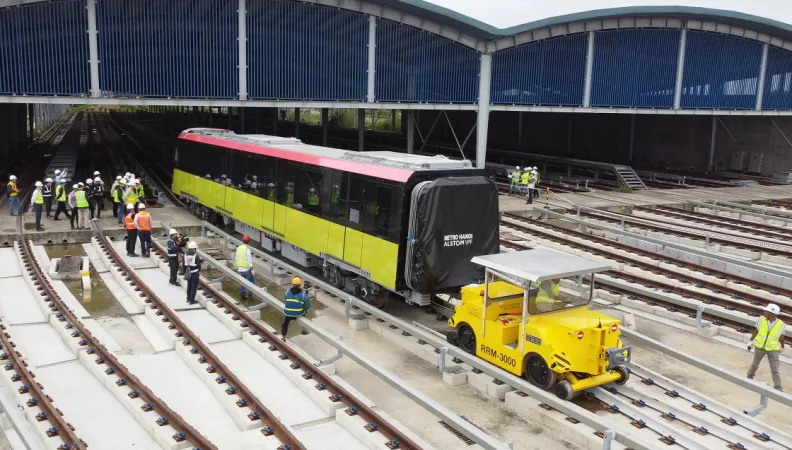Share the page
Vietnam: A New Metro Line Paves the Way to a Greener City
Published on

A ten-year project providing a much-needed boost to public transportation in Vietnam’s capital is nearing completion. Extending more than 12 km, the metro line between Nhon and Hanoi, consisting of 12 stations, will connect the city’s western suburbs to the center and surrounding areas. The objective: reduce traffic congestion, and lower air pollution and greenhouse gas emissions.
Congestion and pollution are persistent problems in the city of Hanoi, affecting public health and causing major traffic delays. With only one person in five using the bus – Hanoi’s only existing public transport system – many resort to private vehicles, with some 6.7 million cars and motorbikes crisscrossing the capital.
When Congestion Causes Health Problems
The Vietnamese capital is one of the most polluted cities in Southeast Asia, and according to Hanoi's Department of Environmental Protection, traffic is responsible for up to 70% of air pollution. It’s also responsible for a reduction in labor productivity, as employees lose a considerable amount of time in their daily commute, due to congestion and numerous road accidents.
Dang Thuy Diem, a university officer, suffers the consequences every day, when she takes her children to school by motorbike in Cau Giay district and then drives to the office, some 5 km away. "I have about 20 to 25 minutes’ drive. But it can take up to an hour if there are traffic jams," says Diem. "I'm tired of commuting to and from work every day, and I'm worried about air pollution.”
These are concerns that Hanoi’s municipality has been trying to address since 2010. That’s when it launched construction the urban metro system to provide more transit alternatives. “The construction of a metropolitan railway network meets a demand from Hanoi municipality, which has more than 10 million residents,” said Mr. Nguyen Cao Minh, Head of Hanoi Metropolitan Railway Management Board (MRB). “It will help protect the environment through a reduction of greenhouse gas emissions.”
A Metro that meets European standards
The metro line 3 Nhon – Hanoi Train Station, financed by AFD, the French Treasury, the European Development Bank, and Asian Development Bank and the city of Hanoi, is one of the city’s first lines. Stretching 12.5 km (8.5 km aerial, 4 km underground), the railway has eight elevated stations, four underground stations and one depot area in Nhon.
Manufactured in France, the 10 red and green aluminum alloy, trains are a nod to the colors of Vietnam’s emblematic rice paddies and dragon fruit. With the arrival of the first train at Hai Phong port on October 18, 2020 the trains turned heads for their elegant design.
Each train has four cars spanning more than 78m, which can carry more than 900 passengers. The cars are equipped with wide doors for convenient boarding and disembarking, as well as adapted seating for people with disabilities. When all ten trains are running, the line’s total capacity reaches 400,000 passengers per day – a huge source of green transportation.
A Transport Alternative that Cleans the Air - bit by bit
Metro line 3 is expected to save around 20,000 tons of CO2 equivalent per year. “The energy consumption of a metro train is 30% less than a bus and 25% less than that of a car,” explained Gilles Machelon, project director of the Alstom, Thales and Colas Rail consortium.
For Dang Thuy Diem, it's a real opportunity: "I live near the metro line. I'm looking forward to using this mode of transport once it opens!”
French Ambassador to Vietnam Nicolas Warnery said: “We worked hard with Hanoi municipality and other partners to deliver the first train in October. We are very proud of it”.
The remaining nine trains are expected to arrive in Vietnam between January and June 2021, and work on an 8km extension to connect the city’s southeast is expected to begin in 2022.
"The metro is the result of a partnership with the city of Hanoi on sustainable cities," says Fabrice Richy, AFD's Director in Vietnam, "built on French strengths, assets and know-how."
